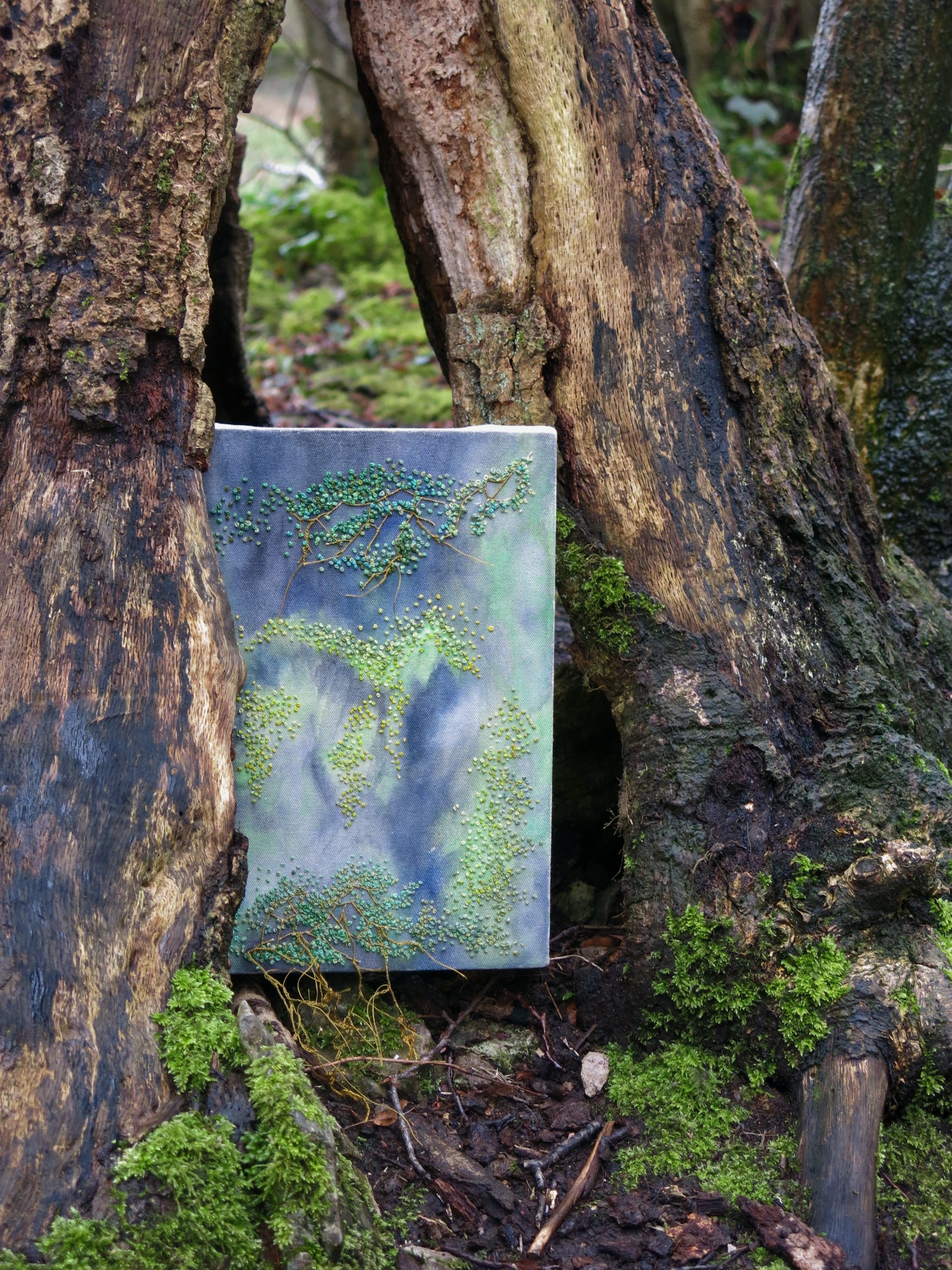Bloom & Entangled Growth (Isabel Crabtree Parker)




A4 (21 x 29.7cm)
Artwork Description
The paintings ‘Bloom’ and ‘Entangled Growth’ were created during a research residency with Morecambe-based art and culture company, Deco Publique and respond to moss and tree textures. During this period, the artist undertook site visits to Eaves Wood, a National Trust woodland in Silverdale, to create work that stimulated a dialogical relationship with the local environment by involving the local woodland as a collaborative participant in the artwork. To accomplish this, the paintings were placed in Eaves Wood, where upon situating the artworks amongst trees and moss, environmental encounters manifested on the sides of the paintings through mossy marks and stains.
Artist Statement
My multimedia practice frequently focuses on the environment and ecology, integrating drawing and painting to relay the intricate complexity of natural forms within my art. I also incorporate textiles into my work to create three-dimensional, sculptural artworks that interact with natural settings, creating a synergistic relationship between art and the environment. Photography is essential to my art practice, functioning as an investigative tool to document sites and ecological phenomena, identifying the individual characteristics of my subject, like the gnarled roots and cracked bark of trees. Combined with the velvety threads of moss my artwork carries incredible tactility and detail that reveals the detail of each organism, providing a sensory window into the complexity of the natural world.
During a research residency with art and culture company Deco Publique, I explored ways of generating dialogues with the environment, visiting Eaves Wood, a National Trust site of ancient woodland in Silverdale. My encounters with trees and abundant moss growth led to the creation of ‘Bloom’ (2024) and ‘Entangled Growth’ (2024), paintings that respond to the intricate textures and entanglement between moss and trees. Placing the paintings in Eaves Wood facilitated a dialogical relationship with the woodland, where environmental encounters manifested on the artworks through mossy marks and stains, establishing the surrounding environment as a collaborative participant in the art.
These paintings respond to the theme of Eco-Visions by illuminating imaginative methods of engaging with the environment as a participant or collaborator in artworks. In the context of rapid planetary change and the objectification of nature, recognising the environment as an interactive force and actor can encourage heightened ecological consciousness and a vision for collaborative, reciprocal dialogues between humanity and the environment.
Isabel Crabtree Parker

Isabel Crabtree Parker (BA Hons, Fine Art, First Class) was born in Kuching, Sarawak, East Malaysia to British parents. A postgraduate student undertaking MA Fine Art at Lancaster University and a Fellow of the Royal Society of Arts, ecology and the environment fascinate her, frequently forming the focus of her multi-media art practice of flora, woodlands and rainforests. Commissioned to illustrate a book on Indigenous folk stories from West Malaysia and Costa Rica, prior to that Isabel was a junior researcher on an ethnographic study of Indigenous communities in Malaysia. This resulted in a co-authored ethnographic book and academic papers in the Journal of Sociology and Development and Southeast Asia Research. Her solo most recent journal publications include a publication for issue 13 of Consilience and a paper (In Press) for the International Journal of Education Through Art with more publications forthcoming.
